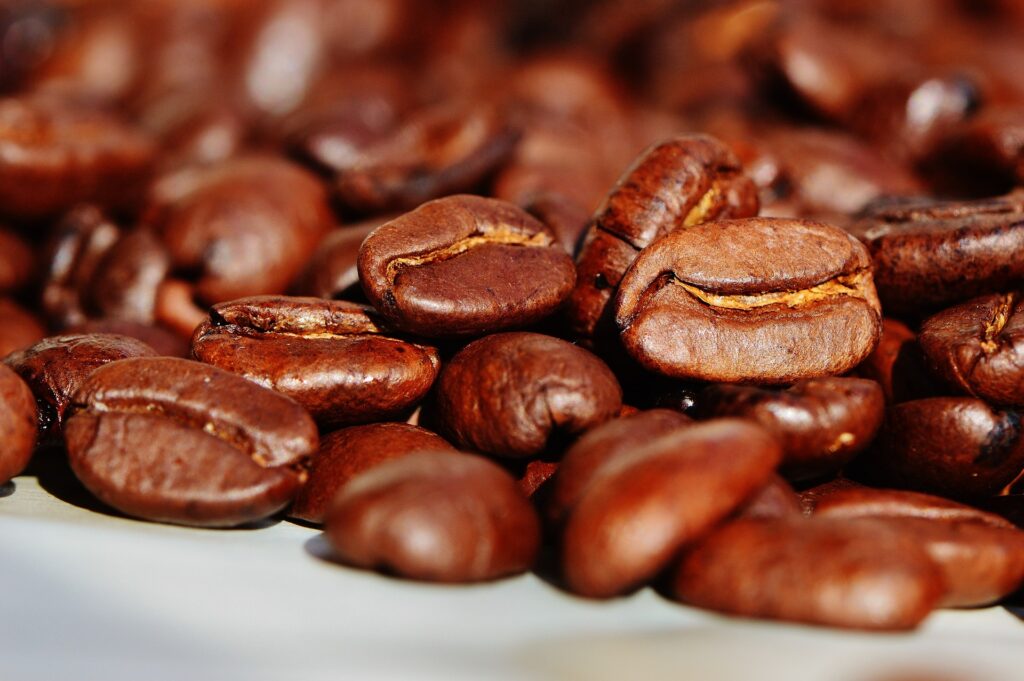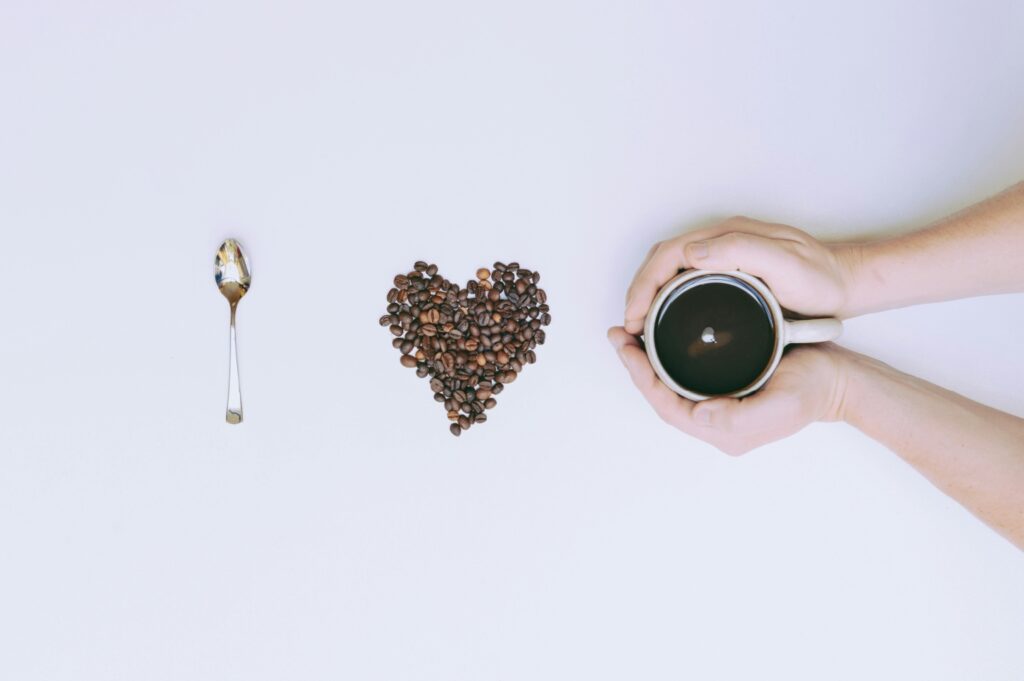What Does Pour Over Coffee Even Mean and Why Are So Many Random People on the Internet Obsessed with It?
I love pour over coffee. I make it every day. I think about it every day, And I’m eager to explain what our over coffee means.

Let’s start with the basics. In the world of beverages, few things command the devotion and excitement that coffee does. It’s more than a mere drink; it’s a ritual, a source of comfort, and a kickstart to the day. You take the bean from the fruit of the coffea bush, dry it, roast it, grind it into chunks, soak it in hot water, and enjoy a flavorful, caffeinated beverage. Simple, right?
Among the many, dozens even, of methods to do the grinding and brewing, pour over has stood out as one of the most popular for coffee aficionados for years. It’s not just a method; it’s a delightful journey into the heart of flavor and simplicity.
What is Pour Over Coffee?
Pour over coffee is a manual brewing technique that involves pouring hot water over coffee grounds, allowing the water to drip through and extract the flavors, resulting in a rich and nuanced cup. It’s a hands-on approach that doesn’t require fancy gadgets – just a pour over dripper, filters, and your favorite coffee beans.
Understanding the tools and process to make pour over coffee helps define it. The stars of the show are the pour over dripper, paper filters, a grinder, and a kettle for precise water control. The kettle gets the water to the exact temperature you select. The grinder makes sure your beans are fresh, not too coarse nor too fine. The dripper and paper filter do the work – the paper sits in the dripper, which sits over a cup or carafe, and you put the ground coffee in the paper before pouring the water over it. Get it!?! Pour over coffee.
So you set up your pour over dripper, add a paper filter, rinse it out, and fill it with perfectly ground coffee. Then, with the grace of a maestro in training, you pour hot water over the grounds in a circular motion. As the water covers the coffee and trickles through, it creates a symphony of flavors filling your cup. If you are looking for a rudimentary understanding, this is all you need. But that just scratches the surface of what pour over coffee is and what makes it so good.
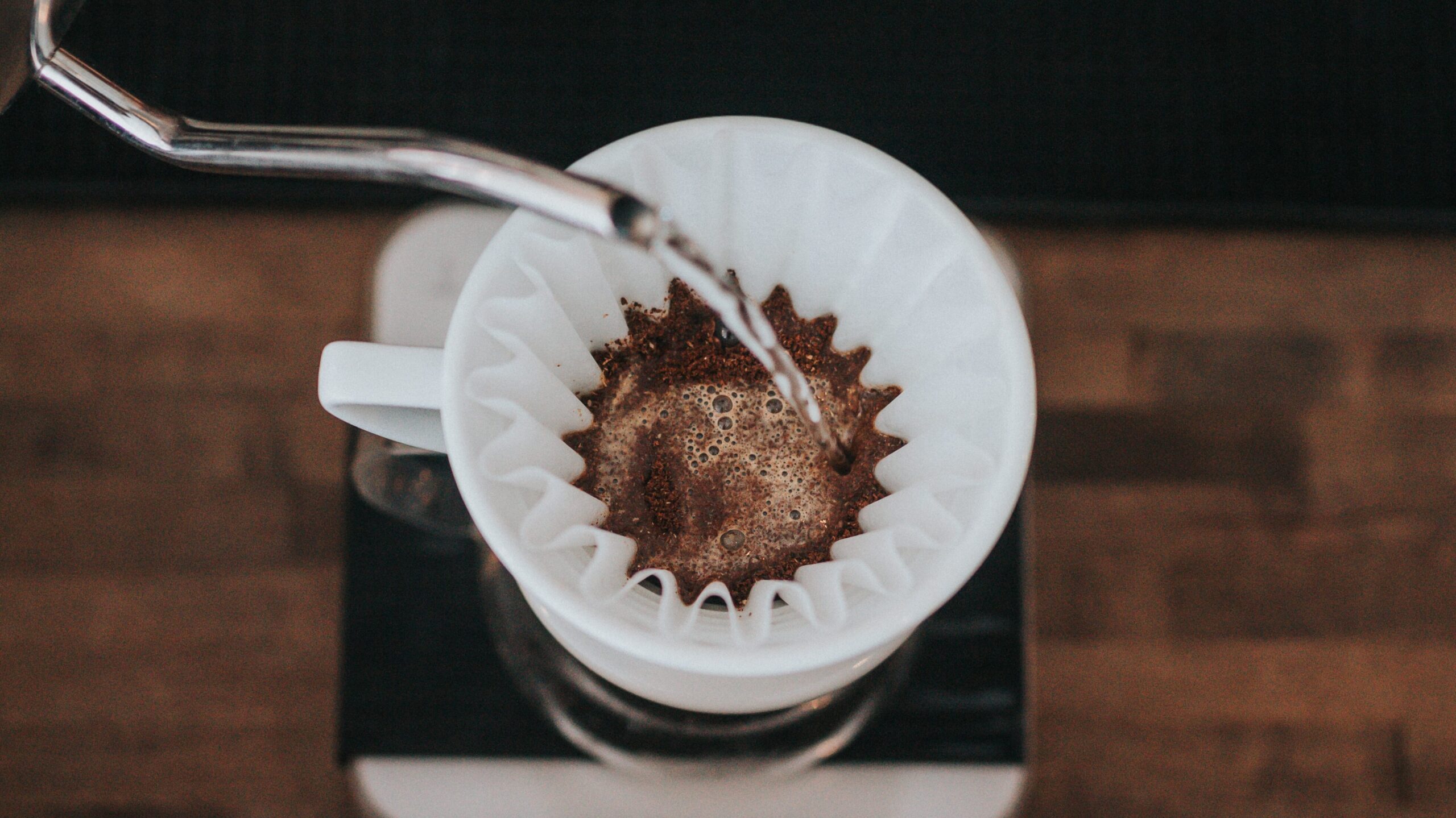
Why Pour Over Coffee?
Why is everyone obsessed with pour over coffee? Are pour over coffees good? What about all the internet jokes about how making a pour over takes 20 minutes and is a huge waste of time?
Let’s put that concern to rest first. When you’re just making a daily drinker, a decent pour over takes about five minutes.
Is that way more time than pouring grinds into a Coffeemate drip machine? Absolutely.
But it’s also five minutes well spent, and becomes an enjoyable morning ritual if you want it to. But WHY?!?
Pour over coffee boasts a distinct flavor profile that sets it apart. It often brings out the brighter and more intricate tasting notes of popular coffee beans. Whether you’re sipping a fruity Ethiopian blend or a nutty Colombian roast, pour over emphasizes the unique characteristics of each cup. So not only is the delight of the craft appealing, the output is more than just caffeine. It’s a delightful, flavorful beverage.
Comparison with Other Brewing Methods
How does pour over coffee stack up against other brewing methods? A few popular alternatives to the pour over are the French Press, espresso, basic drop coffee, and chemex. Countless other methods of getting caffeine and flavor out of a coffee bean exist, but these are often compared to pour over.
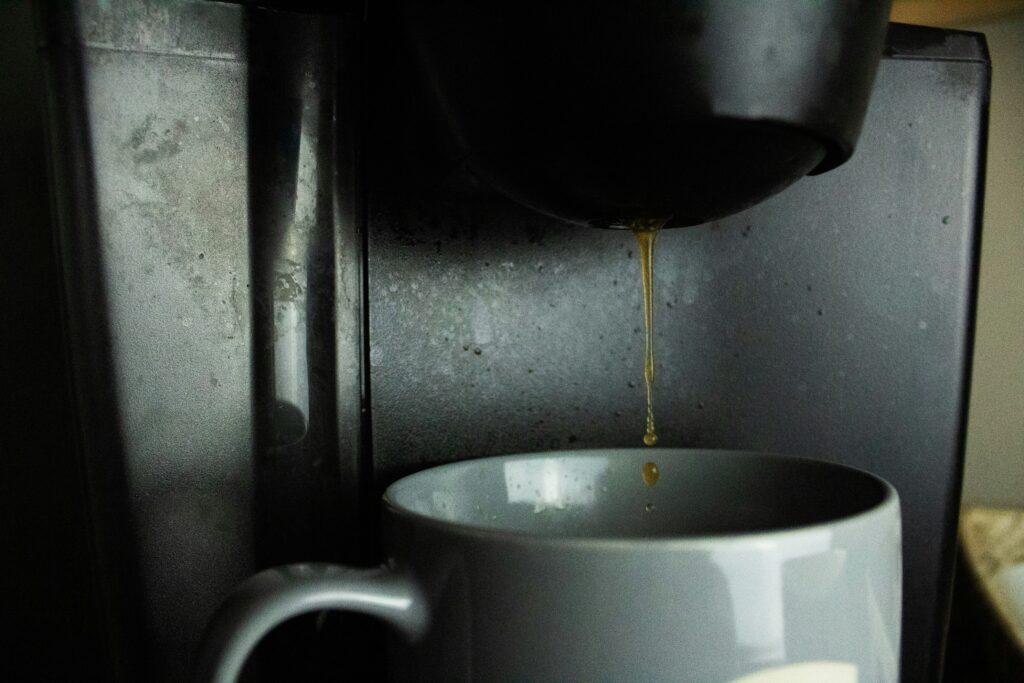
Picture pour over as a subtle play of flavors, easily tuned to individual tastes, compared to the bold symphonies of other methods. While espresso might be a quick and intense burst of flavor, and lends itself to countless milk drinks because the flavors can stand up to that milk added, pour over offers a gradual crescendo, allowing you to savor the journey of each sip.
While drip coffee is simple and fast, pour over offers a more balanced, less acidic cup, and often produces clear, crisp flavors with less of the bold, burnt taste that many drinkers find familiar. French press is pretty close, and itself represents a number of methods. But it still runs a greater risk of overbrewing, especially if you don’t pay attention to the clock. And Chemex is technically a unique, very aesthetically beautiful device that lets you prepare a special variety of pour over coffee.
One of the key advantages of pour over coffee compared to full immersion brews like French Press, drip methods, and espresso, is the control it provides. From water temperature to pouring technique, every aspect of the brewing process is in your hands. This precision allows you to extract the flavors exactly as you desire, resulting in a cup that mirrors your preferences. Of course, this also means you have to manage every detail, and it can be a bit fiddly. It’s also a little bit easier to mess up. Pour over is not a “set it and forget it” method. It works best for those who want to spend time and attention on making something beautifully delicious.
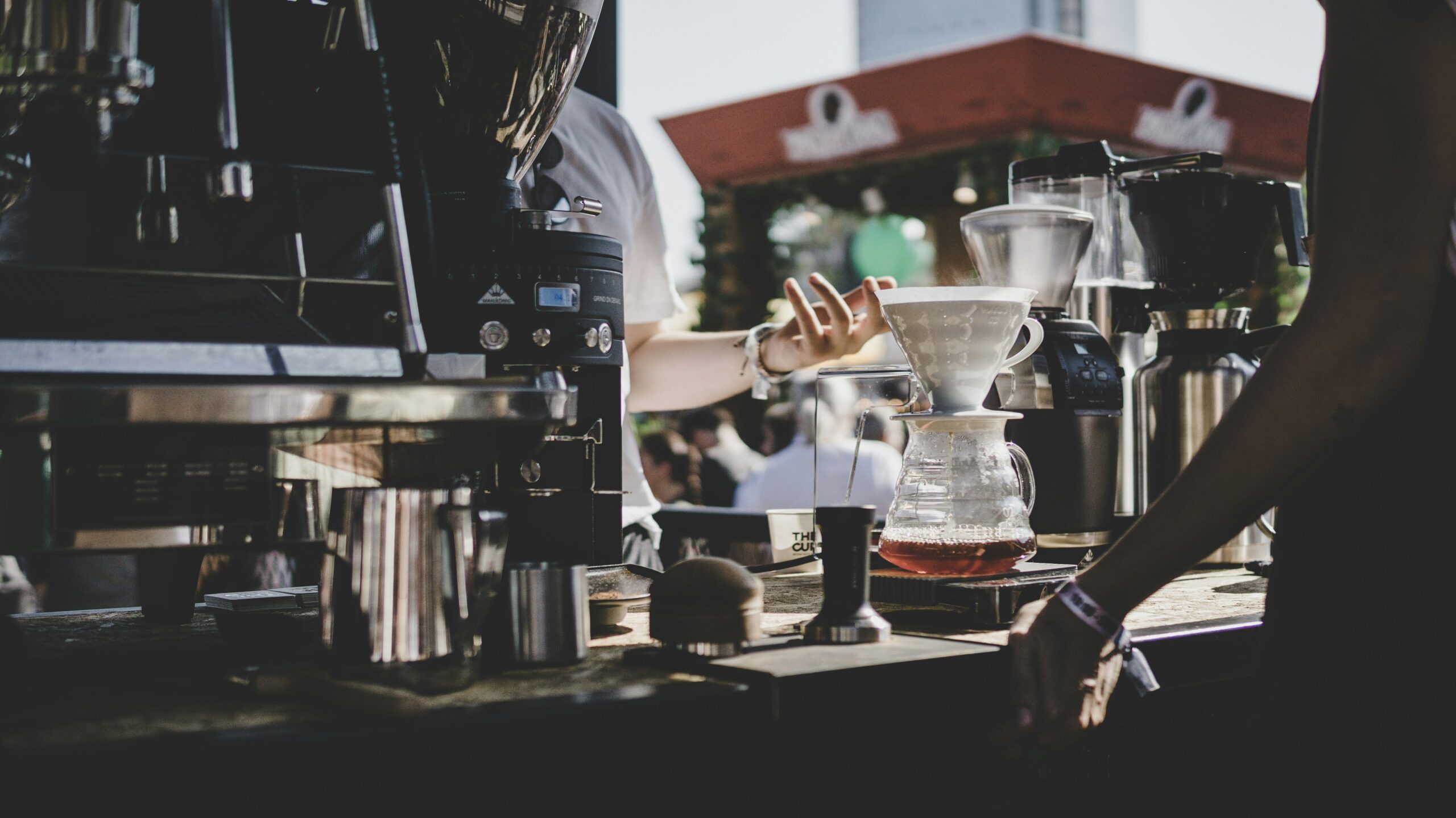
Words from the Coffee Connoisseurs
James Freeman, the founder of Blue Bottle Coffee, describes pour over as “the best way to make coffee if you’re going to drink it black.” In other words, if you won’t be doing anything like adding milk to mask taste, pour over coffee is the best way to get pure, clear, enjoyable flavors achieved through this method. In fact, personally, learning to make a decent cup of pour over is what led me to finally start drinking coffee without (oat) milk.
Scott Rao, a celebrated coffee consultant, hails pour over as a method that allows you to “bring out the flavors that are unique to each coffee.”
So if you want to explore diverse flavors in a chemistry lab setting, maybe pour over coffee is for you.
Are Pour Over Coffees Good?
Undeniably, yes. IF you can be patient. While you can make pour over coffee with any type of bean, some beans lend themselves best to pour over coffee. Light or medium roasts with a lot of interesting, crisp flavors, leaning more into fruity, nutty, floral, or woody tones are a great fit for making pour over, versus bold, COFFEE type flavors. Unlike some brewing methods that may erase subtle flavors, pour over will bring out any distinct tasting notes present in high-quality beans.
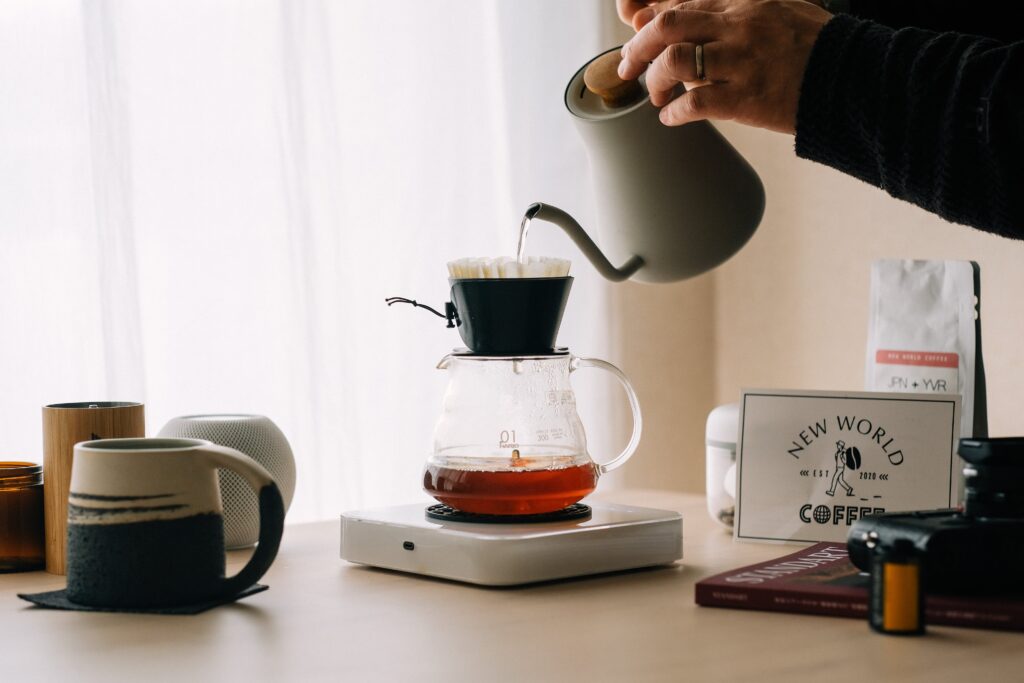
I’m going to be honest here. I don’t think I have a very good palette. So I don’t always appreciate all the different flavor layering in fancy things. BUT when compare coffee preparation styles, and when I compare interesting beans that care about flavor notes with those that don’t, in both cases I can absolutely tell that a pour over, and a nicer bean, actually taste like the identifiable flavors of things, whereas the other options mostly just taste like coffee and a roast level. We’re talking berries, flowers, honey, wood, smoke, coffee… like, basic flavors, but still, actually distinct, enjoyable ones.
But pour over coffee is not just a drink; it’s an aromatic and personal journey that starts before you begin brewing. So what is it that makes the experience of brewing and drinking pour over good? For me, it starts with intimacy, getting to know what makes a specific bean and your gear special. You spend a few minutes in control of and responsible for every brewing variable. You decide the water temperature, the pour rate, and the saturation level. These factors significantly influence the final cup, giving you the power to craft a brew that suits your preferences perfectly.
It gets more visceral, beginning with with the aroma. As you pour water heated to the temperature you choose, it soaks freshly ground coffee that you dialed in on a grinder, releasing an aroma that heightens the overall coffee-making experience.
Then, you get to move through the process to enjoy the first taste. If you realize it’s a little too strong, or too weak and sour, or maybe a little flat, you go back to that process. You make a few tweaks and try something new that is hopefully more delicious tomorrow. You’re never powerless to improve on your work.
Pour over coffee isn’t reserved for the coffee elite. The equipment is not only affordable but widely available. You can find pour over drippers in local stores or online, and the method doesn’t require advanced skills. It’s an open invitation to anyone seeking a delicious and personalized cup.

Tips for Getting Into Pour Over Coffee
Say you’re so compelled by this blog that you want to try making pour over on your own at home for the first time. You purchase a simple temperature controlled kettle, a decent grinder, a dripper cone, and a scale, and you’re ready to get after it. Here are three tips to get close to a good cup on the first try.
Grind size matters a great deal in pour over. You need to tune your grinder to produce a medium-coarse grind, resembling kosher salt. This ensures proper extraction without over-saturation, giving you a balanced cup. Too small, you’ll get bitter coffee and probably an uneven extraction. Too big and it will be weak and sour, under extracted.
Use clean, filtered water at the right temperature. Maintaining a temperature between 195°F to 205°F (90°C to 96°C) ensures optimal extraction, unveiling the full range of flavors in your coffee.
How you pour the water matters. A slow, steady, and circular motion ensures even saturation, contributing to a well-balanced cup. Pouring technique is where the magic happens, so take your time and enjoy the process. This is where you might want to watch a few ideas to get an idea for the timing and technique.
Recap: Pour Over Is Simple

In essence, pour over coffee is not just a brewing method; it’s an art form. It’s about crafting a cup that mirrors your preferences, exploring flavors, and finding joy in the process. It’s the simplicity and accessibility of pour over that make it a favorite among coffee enthusiasts.
What makes pour over fun is the ritualistic process – the careful selection of beans, the precise grind, the controlled pour. It’s an intimate dance with coffee, where every step contributes to the symphony of flavors in your cup. Pour over isn’t just a beverage; it’s an experience.
To those who haven’t yet experienced the joys of pour over coffee, the invitation is clear – give it a try. Experiment, discover, and relish the moments of crafting your perfect cup.

